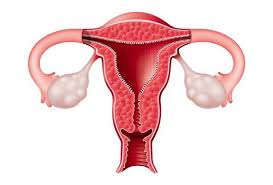Source: medicaldaily.com
Last year in March when Lena Dunham declared in her Vogue article that she had a hysterectomy in an attempt to stop the pain from endometriosis, the condition was thrust into the spotlight, spreading awareness on the incurable pain experienced by many women.
According to the Centers for Disease Control and Prevention (CDC), one in 10 women suffer from endometriosis. And that taken into larger context, mean 176 million women worldwide suffer endometriosis. The condition occurs when tissues found on the lining of the uterus grow elsewhere inside the body. It is primarily found on the pelvic peritoneum, on the ovaries, in the recto-vaginal septum, on the bladder and bowel.
Some of the symptoms are chronic pelvic pain, heavy bleeding, painful periods, pain during and after intercourse, as well as infertility and fatigue. Like in Dunham’s case, it does take a toll on the physical and mental well-being. After trying many treatments, from pelvic floor therapies to a series of minor operations, Dunham’s last resort was the hysterectomy procedure.
Medically speaking, there is no cure for the pain that accompanies endometriosis and may even continue during post hysterectomy and menopause. In an attempt to help these women, researchers at the National Institutes of Health, had tested a novel procedure to pause the pain for up to a year. It is nothing other than Botox, known to freeze target muscles and smoothen wrinkles. The study was published this month in Regional Anesthesia and Pain Medicine on July 8 and details how this can be done. TOP ARTICLES2/5Botox Found To Relieve Endometriosis Pain
Chronic pelvic pain is one of the more prominent symptoms and can recur. Hence, the study targeted 13 women who had muscle spasms in the pelvic region despite surgery and hormonal treatment. The participants were given open-label botulinum toxin injections in the areas affected by muscle spasms, especially the pelvic floor. Their reactions were followed for up to four months in terms of pain intensity, muscle spasm, disability and pain medication.
Before the injection was given, 11 of them had reported moderate pain in more than 4 out of 6 pelvic muscles. Fortunately, within 4 to 8 weeks after the injection, the same 11 women had lesser pain in 3 or less pelvic muscles. “Relief lasted 5–11 months in 7 of the 11 patients followed for up to 1 year. Adverse events were mild and transient,” the result of the study said.
“Many of the women in our study reported that the pain had a profound effect on their quality of life, and this treatment may be able to help them get their lives back,” said coauthor, gynecologist and scientist at the National Institute of Neurological Disorders and Stroke (NINDS), Pamela Stratton, MD in a press release.
So, how exactly did the quality of life improved for these 7 participants and decreased disability in them ? Botulinum toxins are generally used in Botox treatments and work by obstructing nerve signals to prevent target muscles from contracting. In the past, the toxins have been used to treat certain neurological disorders with overactive muscles, which is where the idea came from to these researchers.
Since the sample size was small, larger clinical studies will have to be assessed to understand the benefits of using botulinum toxins for endometriosis in the long-term, the researchers said.
